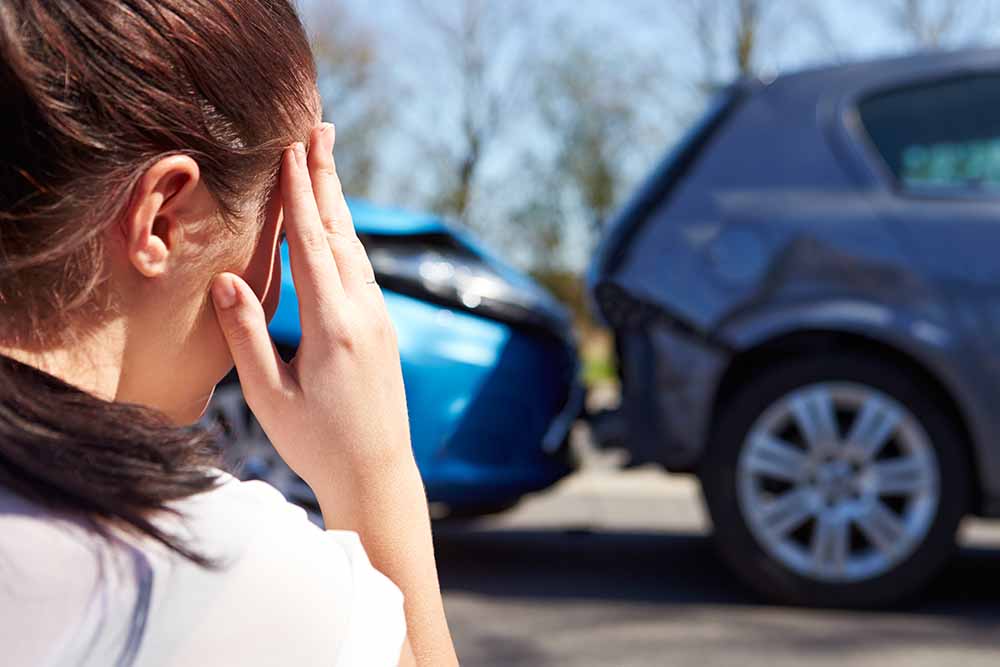
There are many types of collisions that take place in both public and private spaces, and it’s good to be informed of how they might affect your insurance. Remember, no matter the type of collision or who – or what – is at fault, your insurance company is here to help! (Take this as your reminder to ensure that your
Parking lots Rear-end collisions Oh, deer Higher speeds, higher damages Help your insurance help you
Parking lots
Collisions in parking lots usually fall into three categories:
● both parties are present
● one party is present and remains at the site or leaves their information
● someone damages your car and takes off
With today’s highly technical cars, it is difficult to estimate how much damage might be hiding beneath the scratch in your paint. Don’t dismiss a small dent when it could be hiding smashed sensors, broken clips or hidden structural damage.
If you’re actively involved in a collision in a parking lot, determine if anyone has been injured and call for the appropriate help, be it 911, police, or ambulance. Exchange information with the other party and take pictures from every angle.
Low-speed collisions with no injury may not require police, but this can differ depending where you live in Canada; for example, in Ontario, the highway traffic act stipulates that an accident should be reported to police if there are injuries or damage to property that exceeds $2000, as well as any collisions with pedestrians or cyclists. Plus, the costs to repair afterwards can rapidly add up. An insurance adjustor will determine fault using the fault determining rules (for example,
If you find your legally parked car has been damaged by another vehicle in a hit and run, go to a collision reporting centre within 24 hours to report a failure-to-remain. (If there is no reporting centre in your province or territory, the alternative is a police station.) Some insurers may require you to report the hit and run to police in order to rate the claim as not at fault; plus, some of the hit and run deductible waiver endorsements require reporting to police. This will likely not cause an increase in your rates, though depending on your auto insurance coverage, you will likely pay your deductible. Many places have CCTV cameras, and though those resources are generally reserved for cases of injury, theft and high damage, you should try to obtain footage wherever possible.
Rear-end collisions
Generally speaking, if you plow into the back of the car ahead of you, you were following too closely or moving too fast for the conditions. Likewise, if you happen to get hit from behind, an adjuster may find that the driver who hit you is at fault. There are some exceptions – for example, if you believe you’re the victim of a staged collision, or if an aggressive driver has cut you off and braked intentionally causing a collision, call police and gather as much information as you safely can at the site, including witnesses. An insurance adjustor may determine 100 per cent fault in a rear-end collision unless you can provide proof of mitigating circumstances.
While these are a few common scenarios and examples of how fault may be determined after a collision, there are many factors and rules that go into determining who is at fault, and they vary by province. Generally speaking, in provinces that follow a
Oh, deer
In the unfortunate event you collide with live wildlife, the damage to your car would generally be covered under optional loss or damage coverage. Some insurers may treat collision with animals as a comprehensive loss and some as a collision loss. While comprehensive claims do not lead to automatic increases in your rates, repeated claims may impact your eligibility.
Higher speeds, higher damages
Crash sites tell a story, and police will determine whether they’re laying charges, and on whom. Highway Traffic Act convictions can have an impact on your insurance rates. Being involved in even a minor collision can lead to shock, so keep a checklist in your glovebox of what to do: call 911, take photos, trade information, and identify witnesses if possible. There is likely a 24-hour number you can call on your insurance slip. Injuries are often dulled by shock, so be sure to check with your doctor even if you’re assessed at the scene.
Help your insurance help you
● Take clear photos of identification and insurance information
● Make sketches, noting all vehicle locations
● Take photos of damage on all involved vehicles, and any tire markings or weather conditions if applicable
● Any collisions resulting in injury or damages over $2,000 in Ontario must be reported to police
● Be cautious of parties who want to ‘leave insurance out of it’. Take note of all information and report it all to your insurance company.
● Report incidents to the police. In Ontario, parties have a two-year statute of limitations to file an injury claim. If you never reported it, you could find yourself in a legal pothole
● Read wordings carefully when renting a vehicle, even one you rent from a reputable car company. Speak to your adjuster to confirm coverage – plus, adjusters will be able to arrange the rental vehicle if you do have the proper coverage.
Nobody leaves their home in the morning planning on getting into a car crash. Be prepared if you do.